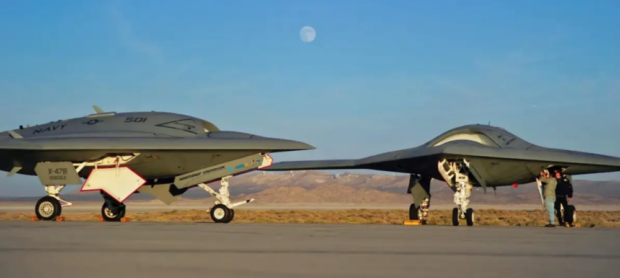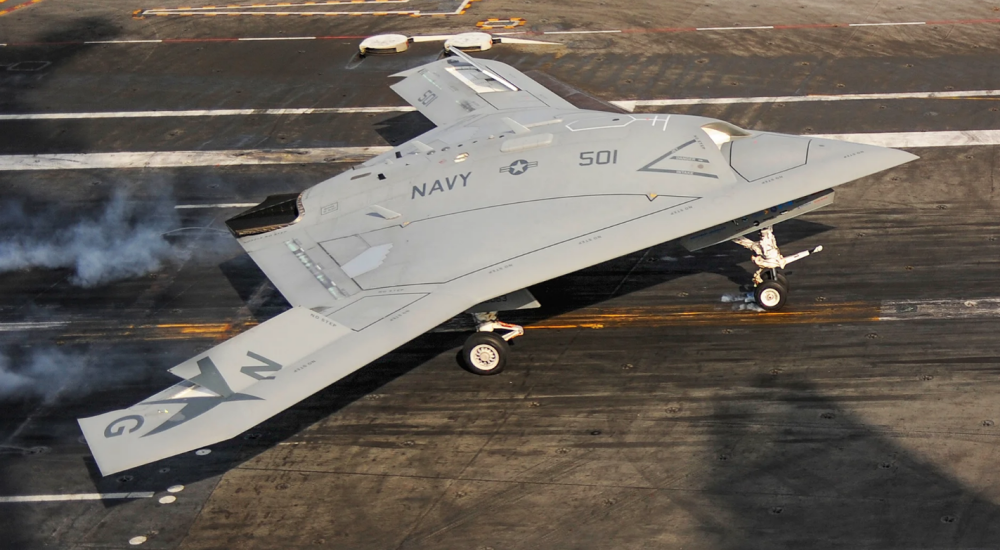When it comes to aircraft that earned their place in the aviation history books, Northrop Grumman’s X-47B demonstrators — two of which were built and flown — are absolutely some of them. Now, well over a decade after first taking to the skies and displaying so much promise, Northrop Grumman tells The War Zone that they are being prepared to be delivered to two aviation museums for display.
While there were indications that the demonstrators, which are owned by Northrop Grumman, could be used for additional test work related to advanced unmanned air combat capabilities that are now finally becoming a major procurement priority, that clearly didn’t pan out. They have been stored at the company’s sprawling Plant 42 facility in Palmdale, California since not long after the UCAS-D program wrapped up in 2015.
Built on a stealthy ‘cranked-kite’ planform, Northrop Grumman’s fighter-sized experimental unmanned combat air vehicles (UCAV) proved that a semi-autonomous flying wing aircraft could successfully operate from an aircraft carrier and refuel from a tanker. But these were just some of the highlights from the U.S. Navy’s test efforts. Building and flying the X-47Bs at all included significant technological advancements.
The earlier Unmanned Combat Air System Demonstrator (UCAS-D) program that resulted in the X-47Bs was so remarkably successful that many were stunned when the demonstrators weren’t given another contract for more testing and risk reduction work even expanding into the tactical realms. Some were even puzzled as to why, given how relatively close to a production form the X-47Bs were, Northrop Grumman was not outright given even a limited production contract. But even the follow-on competition to supply a similar capability — a carrier-borne UCAV capable of strike and surveillance missions — under the Unmanned Carrier-Launched Airborne Surveillance and Strike (UCLASS) tender, was blown up.
In its stead came a much less ambitious competition to supply a carrier-based drone tanker. This was known as the Carrier-Based Aerial Refueling System (CBARS) program, which Boeing won and Northrop Grumman suddenly elected not to compete in, even though at least one of the X-47Bs was equipped with a refueling pod in preparation for the tender.
Fast forward to today and Boeing’s MQ-25 Stingray tanker is set to carry the torch along a trail the X-47Bs blazed years prior. What will come after is by every indication a rapidly more unmanned carrier air wing of the future that will include strike and surveillance capabilities that the X-47Bs were designed to offer — at least in production form — long before.
This is a space Northrop Grumman plans to compete heavily in by leveraging the lessons learned from the X-47Bs and new cutting-edge programs, like the B-21. We will be posting a very in-depth piece that will look back at the X-47B program and look forward to what the company is working on for the future in the advanced unmanned space.



The jet jockeys won this round….but the unmanned refueling role will be a very good step towards combat air systems.